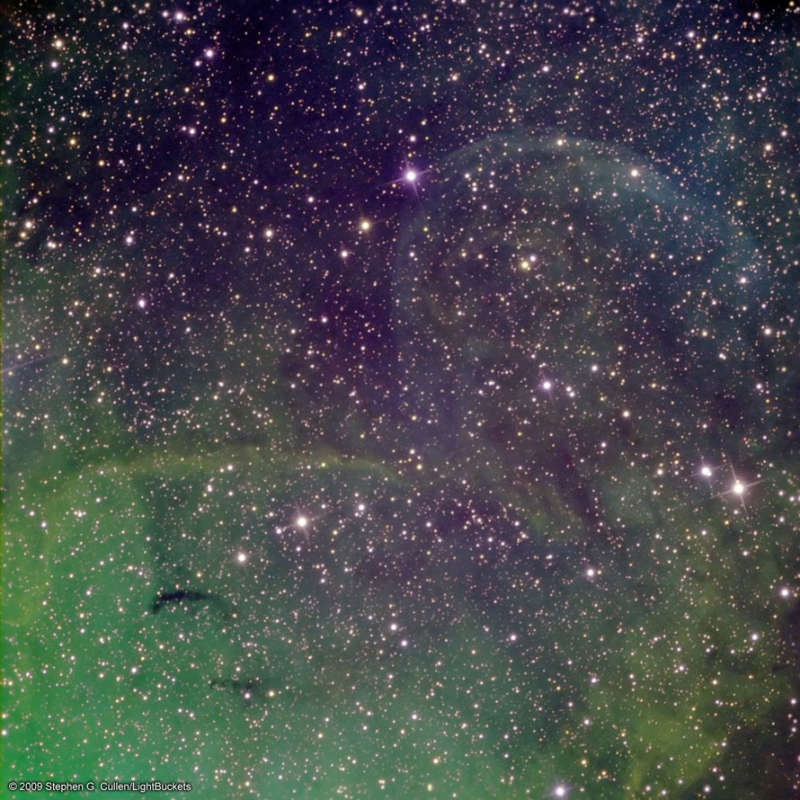Credit & Copyright: Steve Cullen
(lightbuckets.com)
Explanation:
What happens to matter that falls toward an energetic black hole?
In the case of
Cygnus X-1,
perhaps little of that matter actually makes it in.
Infalling gas may first collide not only with itself but with an
accretion disk
of swirling material surrounding the
black hole.
The result may be a
microquasar that glows across the
electromagnetic spectrum and produces powerful
jets that expel much of the
infalling matter back into the cosmos at near light speed
before it can even
approach the black
hole's
event horizon.
Confirmation that black hole jets may create expanding shells has come recently from
the discovery of shells surrounding
Cygnus X-1.
Pictured above on the upper right is one such shell quite possibly created by the
jet of microquasar and black hole candidate
Cygnus X-1.
Rolling your cursor over the image will bring up an annotated version.
The physical processes that create the
black hole jets is a topic that continues to be researched.
1999 2000 2001 2002 2003 2004 2005 2006 2007 2008 2009 2010 2011 2012 2013 2014 2015 2016 2017 2018 2019 2020 2021 2022 2023 2024 2025 |
Yanvar' Fevral' Mart Aprel' Mai Iyun' Iyul' Avgust Sentyabr' Oktyabr' Noyabr' Dekabr' |
NASA Web Site Statements, Warnings, and Disclaimers
NASA Official: Jay Norris. Specific rights apply.
A service of: LHEA at NASA / GSFC
& Michigan Tech. U.
|
Publikacii s klyuchevymi slovami:
Cyg X-1 - black hole - jet - Lebed' X-1 - chernye dyry - dzhet
Publikacii so slovami: Cyg X-1 - black hole - jet - Lebed' X-1 - chernye dyry - dzhet | |
Sm. takzhe:
Vse publikacii na tu zhe temu >> | |
